
How to Use 18650 Li-ion Battery x 2: Examples, Pinouts, and Specs
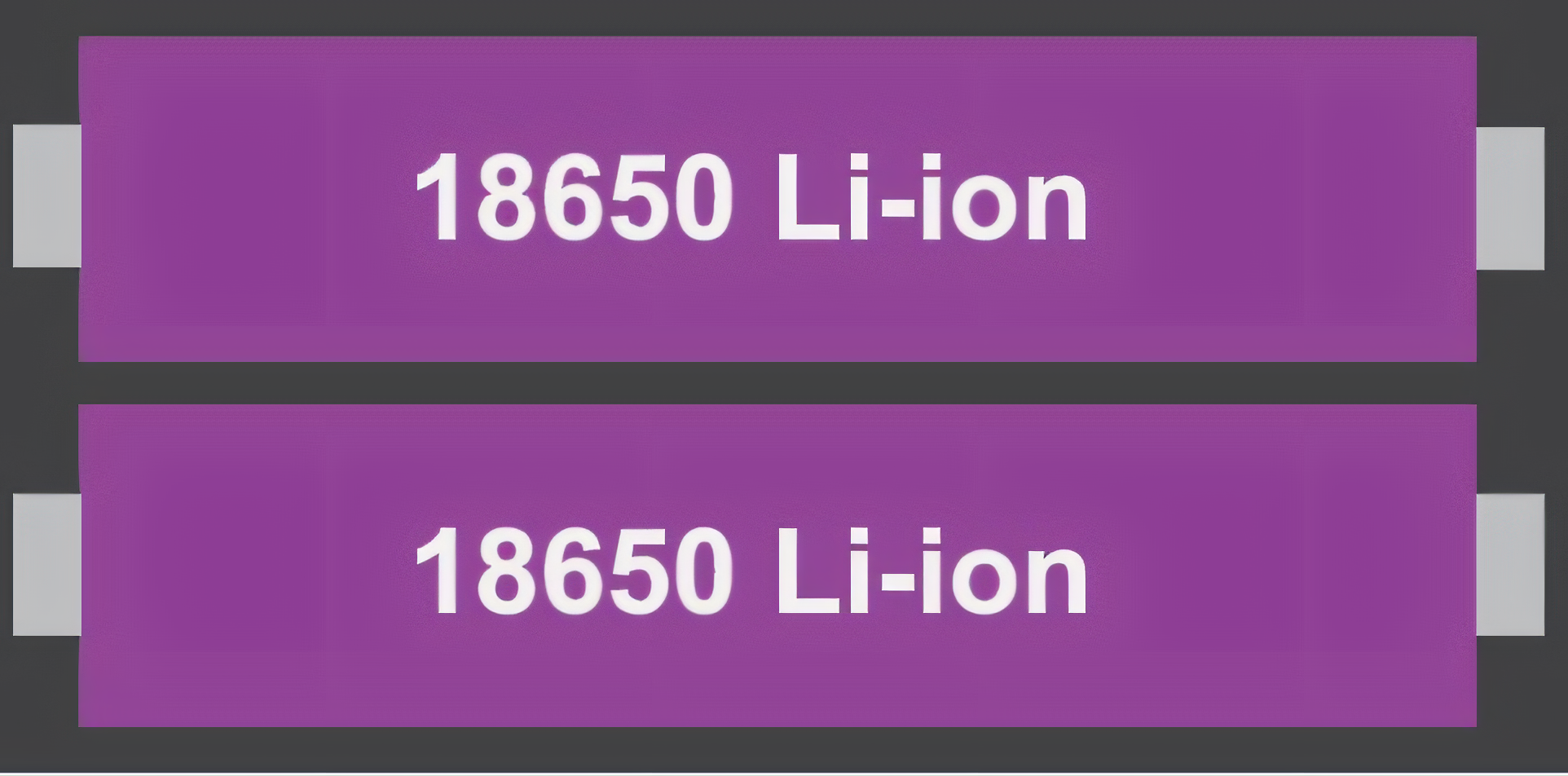
 Design with 18650 Li-ion Battery x 2 in Cirkit Designer
Design with 18650 Li-ion Battery x 2 in Cirkit DesignerIntroduction
The Samsung 18650 Li-ion Battery is a rechargeable lithium-ion cell widely used in portable electronics, power tools, and electric vehicles. Known for its high energy density, long cycle life, and reliability, this battery is a popular choice for applications requiring compact and efficient energy storage. When used in a configuration of two cells, the 18650 batteries can provide increased voltage or capacity, depending on the connection type (series or parallel).
Explore Projects Built with 18650 Li-ion Battery x 2
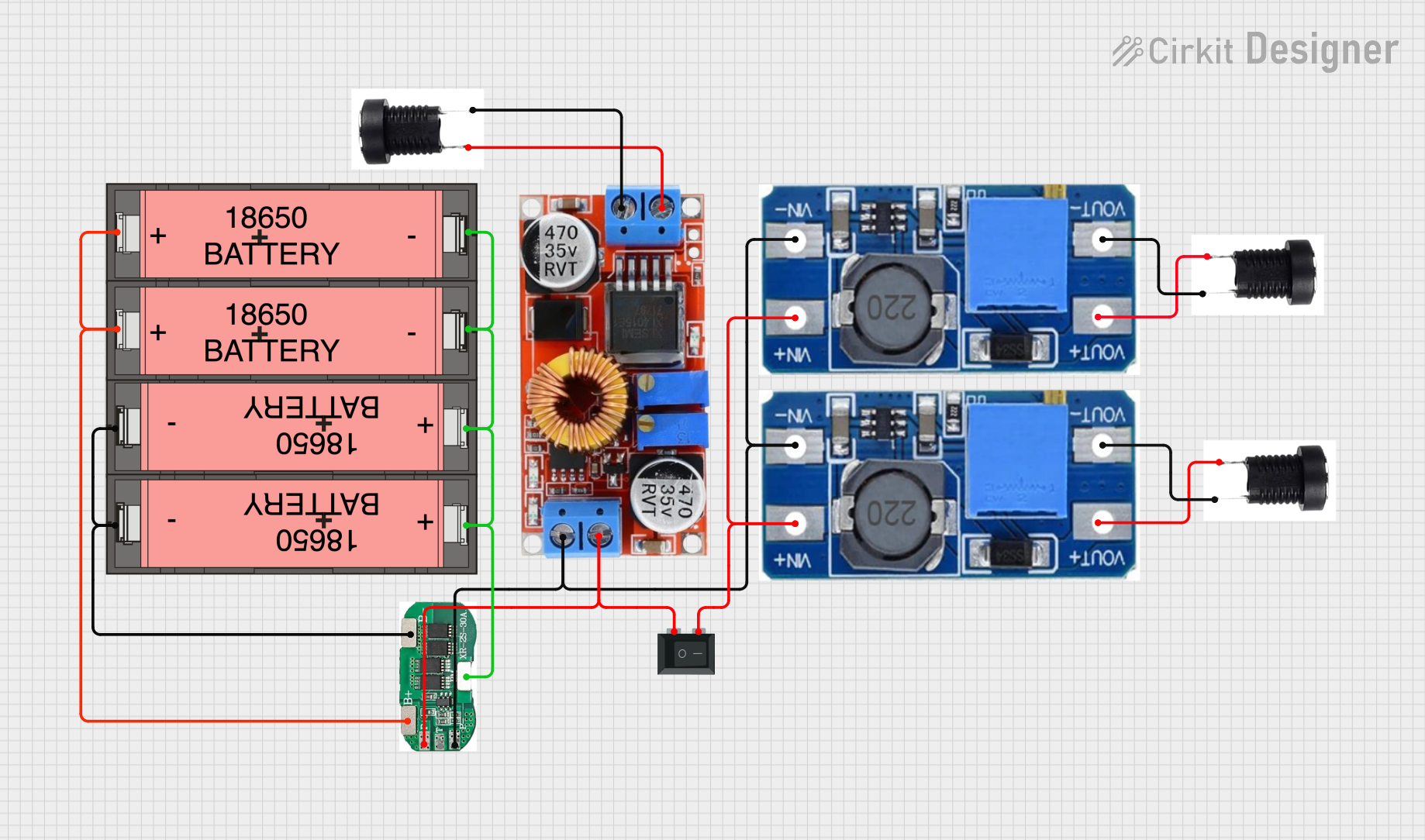
 Open Project in Cirkit Designer
Open Project in Cirkit Designer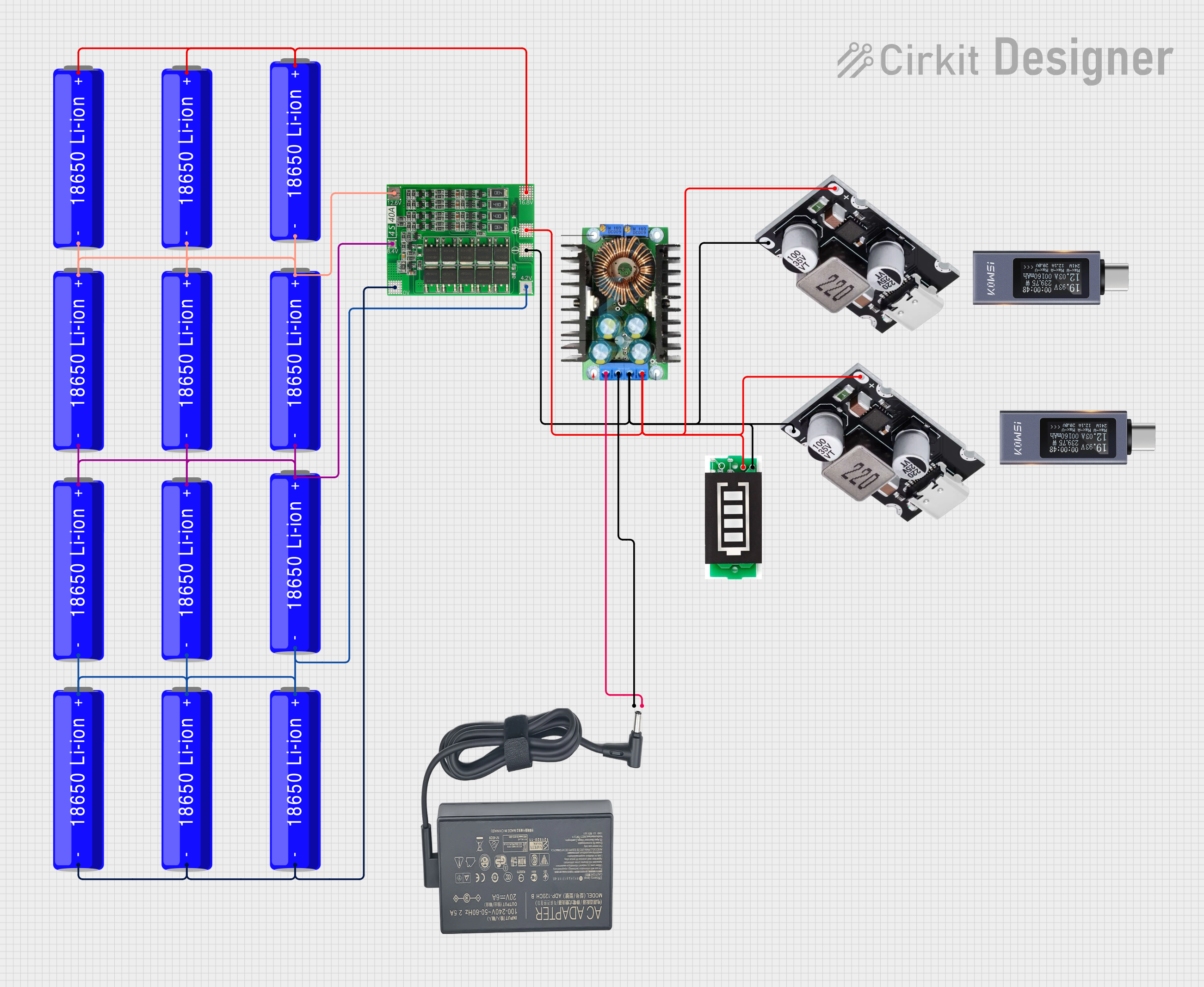
 Open Project in Cirkit Designer
Open Project in Cirkit Designer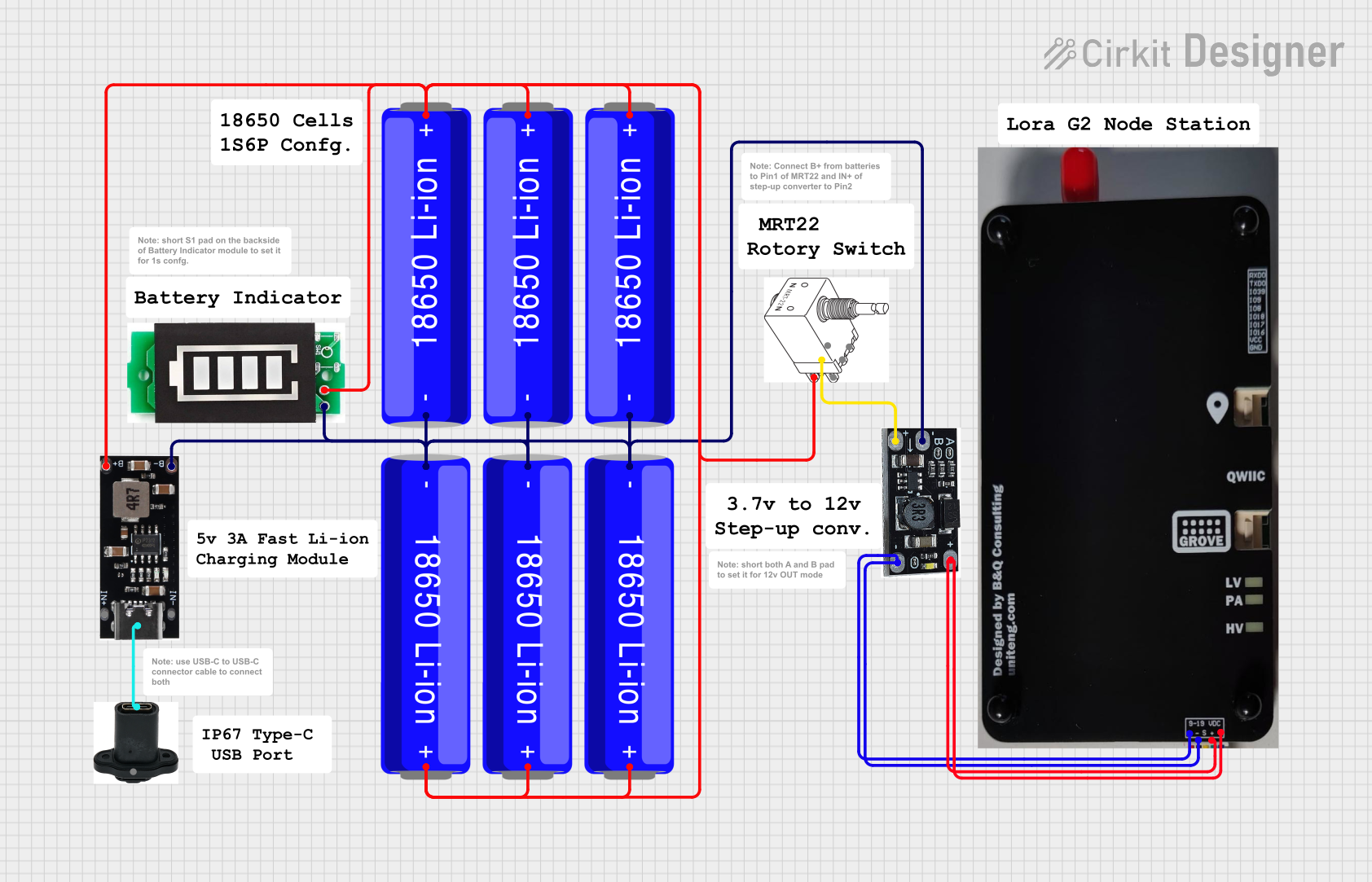
 Open Project in Cirkit Designer
Open Project in Cirkit Designer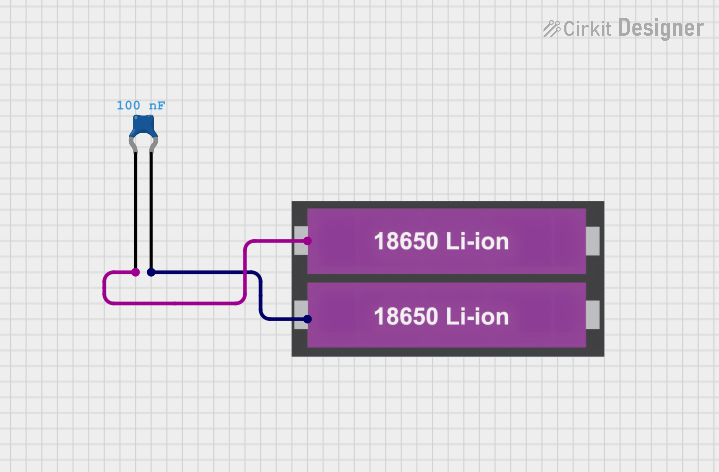
 Open Project in Cirkit Designer
Open Project in Cirkit DesignerExplore Projects Built with 18650 Li-ion Battery x 2

 Open Project in Cirkit Designer
Open Project in Cirkit Designer
 Open Project in Cirkit Designer
Open Project in Cirkit Designer
 Open Project in Cirkit Designer
Open Project in Cirkit Designer
 Open Project in Cirkit Designer
Open Project in Cirkit DesignerCommon Applications
- Power banks and portable chargers
- Flashlights and LED lighting
- Electric bicycles and scooters
- DIY electronics projects
- Robotics and IoT devices
- Uninterruptible Power Supplies (UPS)
Technical Specifications
Below are the key technical details for a single Samsung 18650 Li-ion battery. When using two batteries, the specifications will vary depending on the connection configuration.
| Parameter | Value |
|---|---|
| Manufacturer | Samsung |
| Part ID | 18650 |
| Nominal Voltage | 3.7V |
| Fully Charged Voltage | 4.2V |
| Capacity | 2600mAh to 3500mAh (varies by model) |
| Maximum Discharge Current | 10A to 30A (varies by model) |
| Charging Voltage | 4.2V ± 0.05V |
| Charging Current | Standard: 0.5C, Max: 1C |
| Operating Temperature | Charge: 0°C to 45°C, Discharge: -20°C to 60°C |
| Dimensions | 18mm (diameter) x 65mm (length) |
| Weight | ~45g per cell |
Pin Configuration and Descriptions
The 18650 battery does not have traditional "pins" but instead features two terminals: a positive terminal and a negative terminal. Below is a description of these terminals.
| Terminal | Description |
|---|---|
| Positive (+) | The top terminal, marked with a raised edge. |
| Negative (-) | The flat bottom terminal. |
Usage Instructions
Connecting Two 18650 Batteries
- Series Configuration: Connect the positive terminal of the first battery to the negative terminal of the second battery. This configuration increases the voltage (e.g., 3.7V + 3.7V = 7.4V) while maintaining the same capacity (e.g., 2600mAh).
- Parallel Configuration: Connect the positive terminals of both batteries together and the negative terminals together. This configuration increases the capacity (e.g., 2600mAh + 2600mAh = 5200mAh) while maintaining the same voltage (3.7V).
Important Considerations
- Battery Protection: Always use a Battery Management System (BMS) to prevent overcharging, over-discharging, and short circuits.
- Charging: Use a dedicated Li-ion battery charger with a constant current/constant voltage (CC/CV) charging profile.
- Balancing: When using multiple batteries, ensure they are balanced (same voltage and capacity) to avoid uneven discharge or damage.
- Polarity: Double-check the polarity before connecting the batteries to a circuit to avoid damage to the batteries or connected devices.
- Storage: Store the batteries in a cool, dry place at ~50% charge for long-term storage.
Example: Using 18650 Batteries with an Arduino UNO
Below is an example of powering an Arduino UNO using two 18650 batteries in series (7.4V) with a voltage regulator.
Circuit Diagram
- Connect the positive terminal of the battery pack to the input of a 5V voltage regulator (e.g., LM7805).
- Connect the output of the voltage regulator to the Arduino UNO's 5V pin.
- Connect the negative terminal of the battery pack to the Arduino's GND pin.
Sample Code
// Example code to blink an LED connected to pin 13 of the Arduino UNO
// Ensure the Arduino is powered by the 18650 battery pack via a voltage regulator
void setup() {
pinMode(13, OUTPUT); // Set pin 13 as an output pin
}
void loop() {
digitalWrite(13, HIGH); // Turn the LED on
delay(1000); // Wait for 1 second
digitalWrite(13, LOW); // Turn the LED off
delay(1000); // Wait for 1 second
}
Troubleshooting and FAQs
Common Issues
Battery Overheating
- Cause: Overcharging, over-discharging, or excessive current draw.
- Solution: Use a BMS and ensure the load does not exceed the battery's maximum discharge current.
Uneven Discharge in Multiple Batteries
- Cause: Batteries with different capacities or charge levels.
- Solution: Use batteries of the same model and capacity, and balance them before use.
Battery Not Charging
- Cause: Faulty charger or damaged battery.
- Solution: Check the charger output voltage and replace the battery if necessary.
Short Circuit
- Cause: Accidental connection of positive and negative terminals.
- Solution: Use insulated battery holders and avoid exposing terminals.
FAQs
Can I use 18650 batteries without a BMS?
- It is not recommended. A BMS ensures safe operation by protecting against overcharging, over-discharging, and short circuits.
How do I know if my 18650 battery is fully charged?
- A fully charged 18650 battery will have a voltage of approximately 4.2V.
Can I charge two 18650 batteries in parallel?
- Yes, but ensure they are balanced and use a charger designed for parallel charging.
What is the lifespan of an 18650 battery?
- Typically, 18650 batteries last for 300-500 charge cycles, depending on usage and care.
By following these guidelines and best practices, you can safely and effectively use Samsung 18650 Li-ion batteries in your projects.